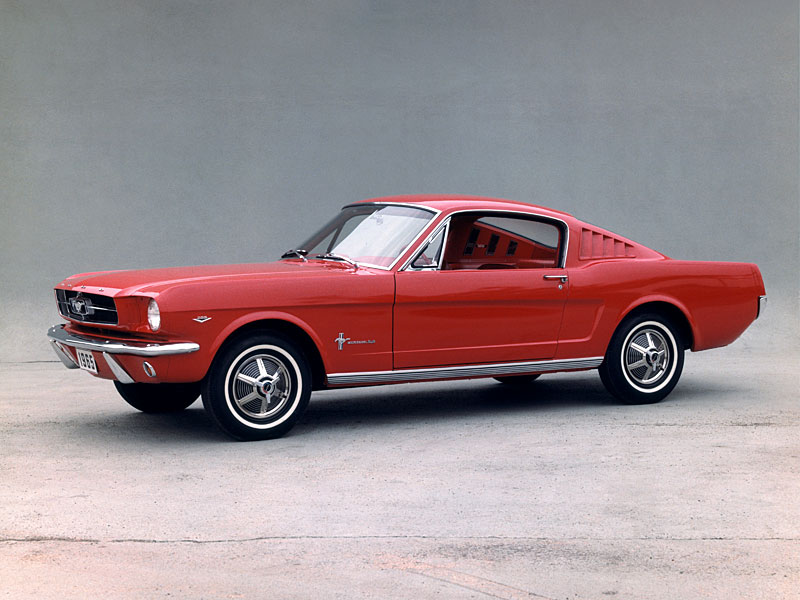The year 1964 was pivotal in the automotive world, introducing a model that would become synonymous with American muscle—the Ford Mustang. Elegantly crafted and enthusiastically engineered, the Mustang emerged as more than just a car; it transformed into a cultural phenomenon, embodying the spirit of freedom and adventure that characterized the era.
As the decade forged ahead, the post-war American landscape teemed with optimism and a burgeoning desire for individual expression. The Mustang was designed to tap into this zeitgeist, appealing to the youthful exuberance of the burgeoning baby boomer generation. But what was it about the Mustang that captivated hearts and ignited a desire for the open road?
In the early stages of its development, the Mustang was conceived as a response to the changing dynamics of car ownership. As young adults sought out vehicles that reflected their style and aspirations, Ford noticed a gap in the market—a class of “pony cars,” which would combine performance, affordability, and eye-catching aesthetics. Drawing from the stylings of the Thunderbird yet innovating in areas such as sporty handling and a compact design, the Mustang promised to deliver a thrilling ride that didn’t require a luxurious budget.
The formula for the Mustang aimed to charm a diverse audience. With an array of optional engines and configurations, from the economical inline-six to the brawny V8, buyers found an unprecedented opportunity to customize their vehicles to match their personalities. This focus on personalization was revolutionary in its own right. It beckoned countless drivers to explore the notion of what a car could be—an extension of self, rather than merely a means to travel from point A to point B.
On April 17, 1964, the Ford Mustang made its grand debut at the New York World’s Fair. This unveiling was not just a launch; it was an assertion of cultural significance. The Mustang turned heads immediately with its sleek, sporty silhouette, inspired by European designs yet unmistakably American. Families and young singles were drawn to the alluring promise of speed and style, a perfect emblem of youth and rebellion. Within weeks, the Mustang had already outstripped Ford’s expectations, flying off dealer lots at an astonishing rate.
The allure of the Mustang extended far beyond its striking good looks. Its performance credentials were remarkable, too. The lightweight body and innovative suspension system provided handling that was nimble for the time, which opened up a new world of driving experiences. Enthusiasts reveled in the raw power and acceleration that the V8 engines offered, which at the time was a significant departure from the norm. Car racing aficionados began to see the Mustang as a suitable contender on the race circuits, a symbol of both performance and potential.
Moreover, the Mustang’s marketing strategies resonated deeply with the growing youth culture. Ford rolled out clever, engaging advertisements that spoke directly to consumers’ desires for excitement and mobility. These campaigns showcased the Mustang not just as a car, but as a lifestyle. The vehicle became the focus of choice among young couples on dates, college students seeking adventure, and even families looking for a shared source of thrill. It inspired an exuberance fueled by freedom, road trips, and exhilarating drives down scenic highways.
The cultural impact of the Mustang proliferated through music and film, forever embedding the vehicle in the American zeitgeist. Movies such as “Bullitt” featured the iconic Mustang in high-speed chases, capturing the attention of viewers and further cementing the correlation between the car and a feeling of rebellion. Similarly, songs of the era often romanticized the open road and the joy of driving, intertwining the Mustang with the very essence of American dreams.
However, success did not come without challenges. The ’64 and a Half Mustang was a harbinger of innovation but also a test ground for reliability. As demand surged, so did production pressures, which occasionally led to quality control issues. Nevertheless, Ford was quick to adapt, continuously refining the design and engineering of the Mustang to ensure it met the expectations bestowed upon such an iconic brand. Subsequent iterations maintained the balance between performance and style while embracing the needs and desires of evolving drivers.
As the years progressed beyond its initial launch, the Mustang’s legacy continued to evolve, but its roots lie securely in that groundbreaking moment in 1964. The allure of the Mustang transcended generations, paving the road for a lineage that would see various models, trims, and technical advancements over the decades. Today, the Mustang retains its status not only as an enduring automotive icon but also as a symbol of independence and spirited exploration.
The story of the Ford Mustang is not merely about a car; it is an exploration of American culture, identity, and the perpetual desire for freedom. With its stunning aesthetics, exhilarating performance, and that ineffable allure, the ’64 and a Half Mustang continues to inspire and beckon new generations of drivers to embark on their own journeys, truly epitomizing the spirit of the open road.
